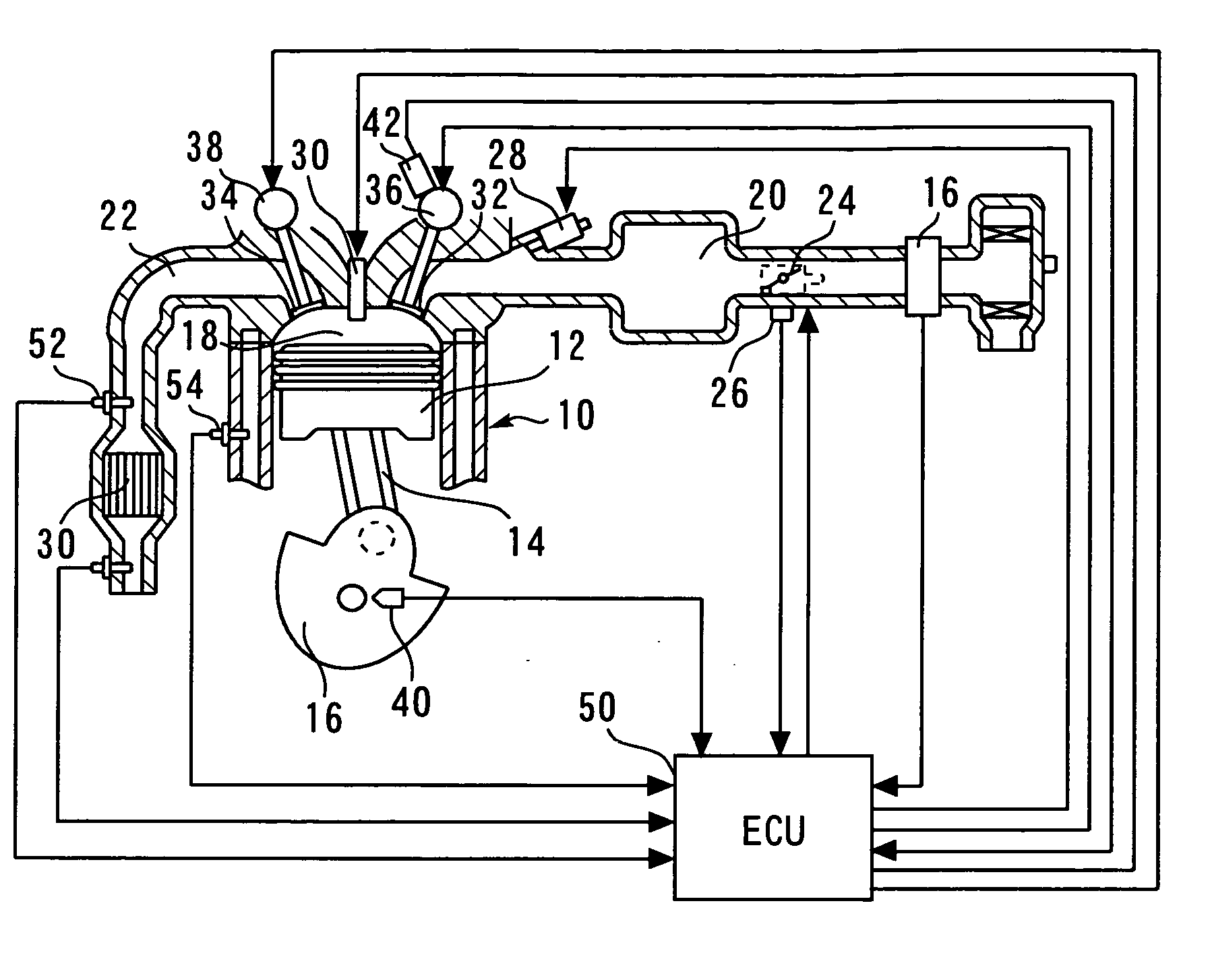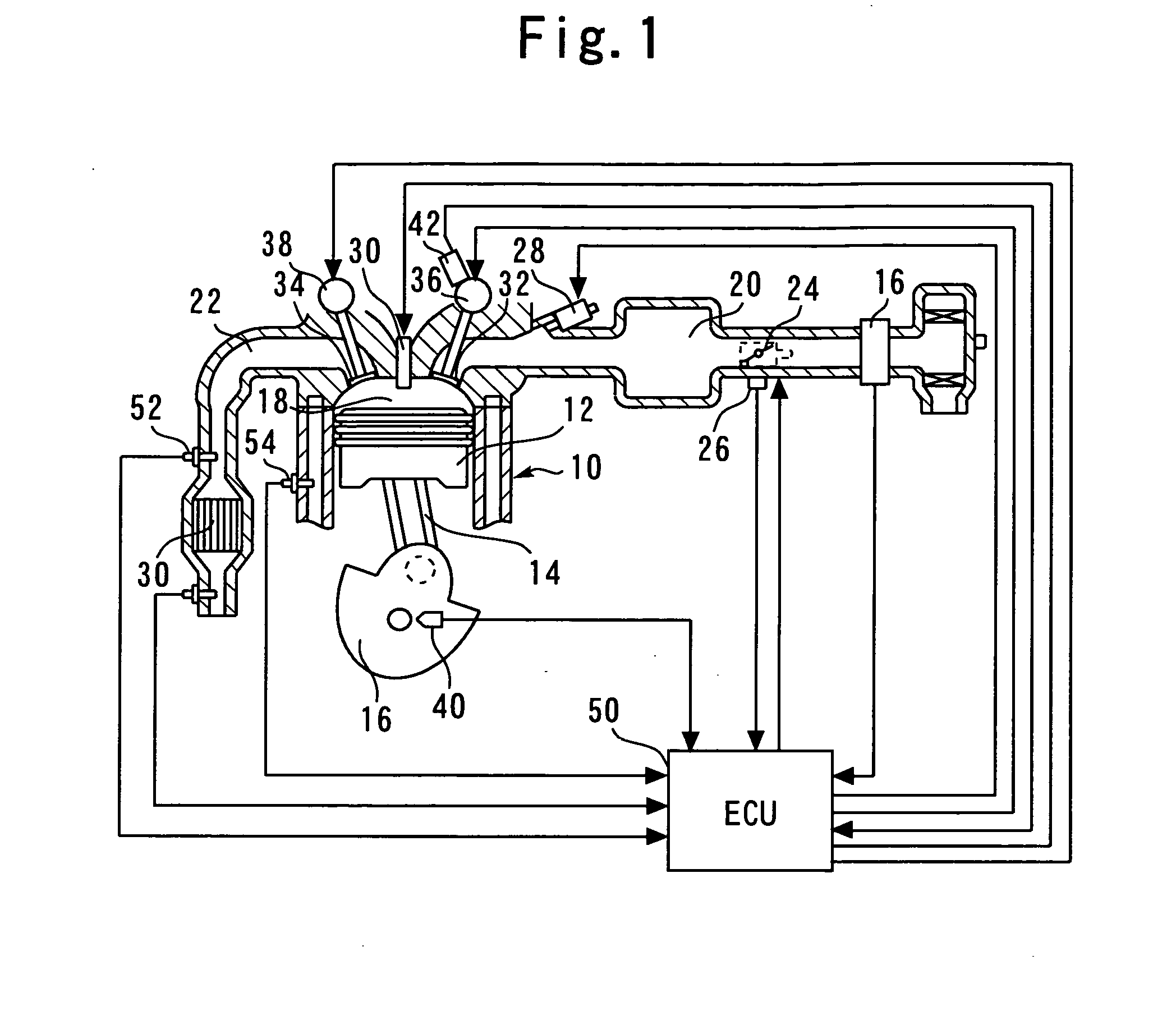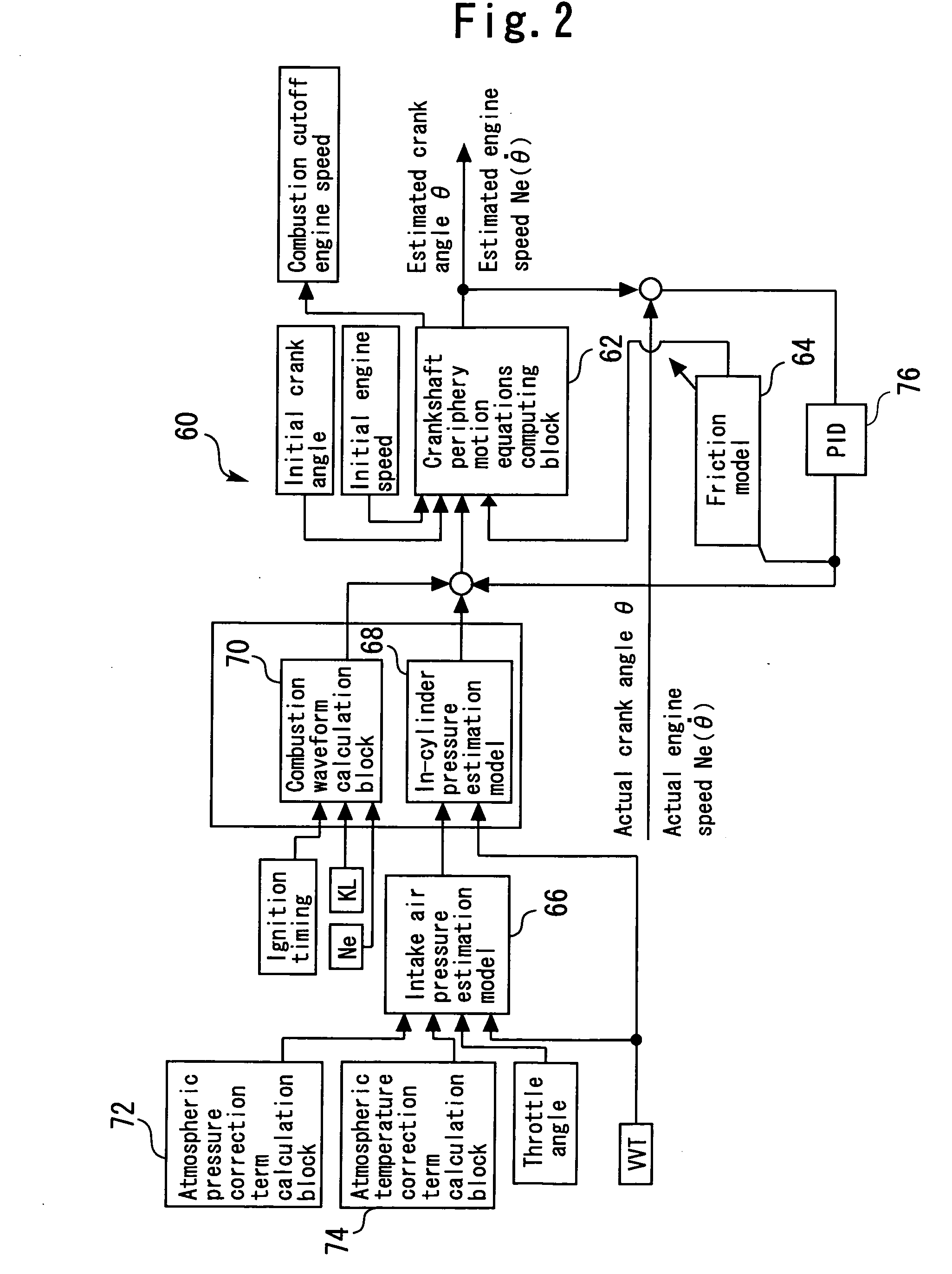Stop Position Control Apparatus for Internal Combustion Engine
a technology for controlling apparatus and internal combustion engine, which is applied in the direction of engine starters, electric control, instruments, etc., can solve the problems of low accuracy and convergence of the control of the crank stop position, and achieve the improvement of the accuracy of estimating the stop position of the crankshaft, high efficiency arithmetic operations, and controlled accurately
- Summary
- Abstract
- Description
- Claims
- Application Information
AI Technical Summary
Benefits of technology
Problems solved by technology
Method used
Image
Examples
first embodiment
System Configuration According to First Embodiment
[0032]FIG. 1 is a diagram explaining a configuration of an internal-combustion engine 10 to which a stop position control apparatus for an internal-combustion engine is applied as a first embodiment of the present invention. The system of the present embodiment includes the internal-combustion engine 10. Also, the present embodiment assumes an inline four-cylinder engine as the internal-combustion engine 10. Each of cylinders of the internal-combustion engine 10 contains a piston 12. The piston 12 is coupled with a crankshaft 16 via a connecting rod 14. Each of the cylinders of the internal-combustion engine 10 also has a combustion chamber 18 formed atop the piston 12. An air intake passageway 20 and an exhaust passageway 22 are communicated with the combustion chamber 18.
[0033]The air intake passageway 20 includes a throttle valve 24. The throttle valve 24 is an electronically controlled throttle valve that can control an open posi...
second embodiment
[0138]A second embodiment of the present invention will now be described with reference to FIG. 11.
[0139]The system according to the second embodiment is implemented by adopting the hardware configuration shown in FIG. 1 and engine model 60 shown in FIG. 2 and by allowing the ECU 50 to execute a routine shown in FIG. 11 instead of the routine shown in FIG. 6.
[0140]The stop position of the crank in the internal-combustion engine 10 is appropriately controlled by using the above-described engine model 60 in order to improve the engine restartability during the execution of economical running control. To appropriately control the stop position of the crank, it is necessary to estimate the friction (friction torque TRQf) inside the internal-combustion engine 10 with high accuracy since the friction is a very influential factor. Magnitude of the friction usually depends on the lubricating oil temperature of the internal-combustion engine 10. The friction, however, is typically corrected ...
third embodiment
[0151]A third embodiment of the present invention will now be described with reference to FIG. 12.
[0152]The system according to the third embodiment is implemented by adopting the hardware configuration shown in FIG. 1 and engine model 60 shown in FIG. 2 and by allowing the ECU 50 to execute a routine shown in FIG. 12 instead of the routine shown in FIG. 11.
[0153]A system of the present embodiment differs from the system of the above-described second embodiment in terms only of a method of judging the difference between the cooling water temperature and the lubricating oil temperature. Hereunder, a description will be made mainly of the method in accordance with the routine shown in FIG. 12.
Detail Process in the Third Embodiment
[0154]FIG. 12 is a flowchart of the routine that the ECU 50 executes in the third embodiment of the present invention. In the routine of FIG. 12, if it is judged in step 300 that the internal-combustion engine 10 is currently in steady operation, an evaluatio...
PUM
 Login to View More
Login to View More Abstract
Description
Claims
Application Information
 Login to View More
Login to View More - R&D
- Intellectual Property
- Life Sciences
- Materials
- Tech Scout
- Unparalleled Data Quality
- Higher Quality Content
- 60% Fewer Hallucinations
Browse by: Latest US Patents, China's latest patents, Technical Efficacy Thesaurus, Application Domain, Technology Topic, Popular Technical Reports.
© 2025 PatSnap. All rights reserved.Legal|Privacy policy|Modern Slavery Act Transparency Statement|Sitemap|About US| Contact US: help@patsnap.com



